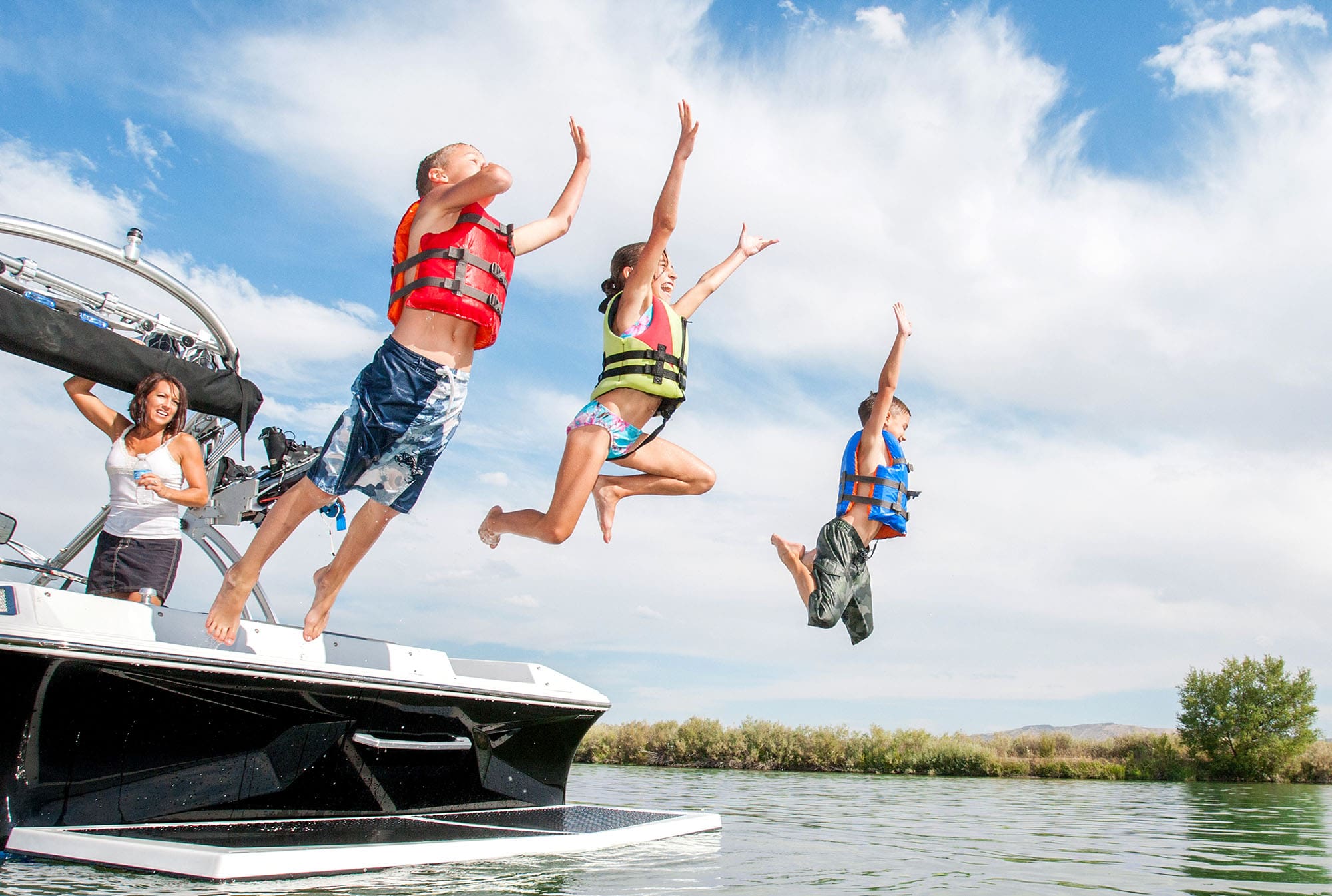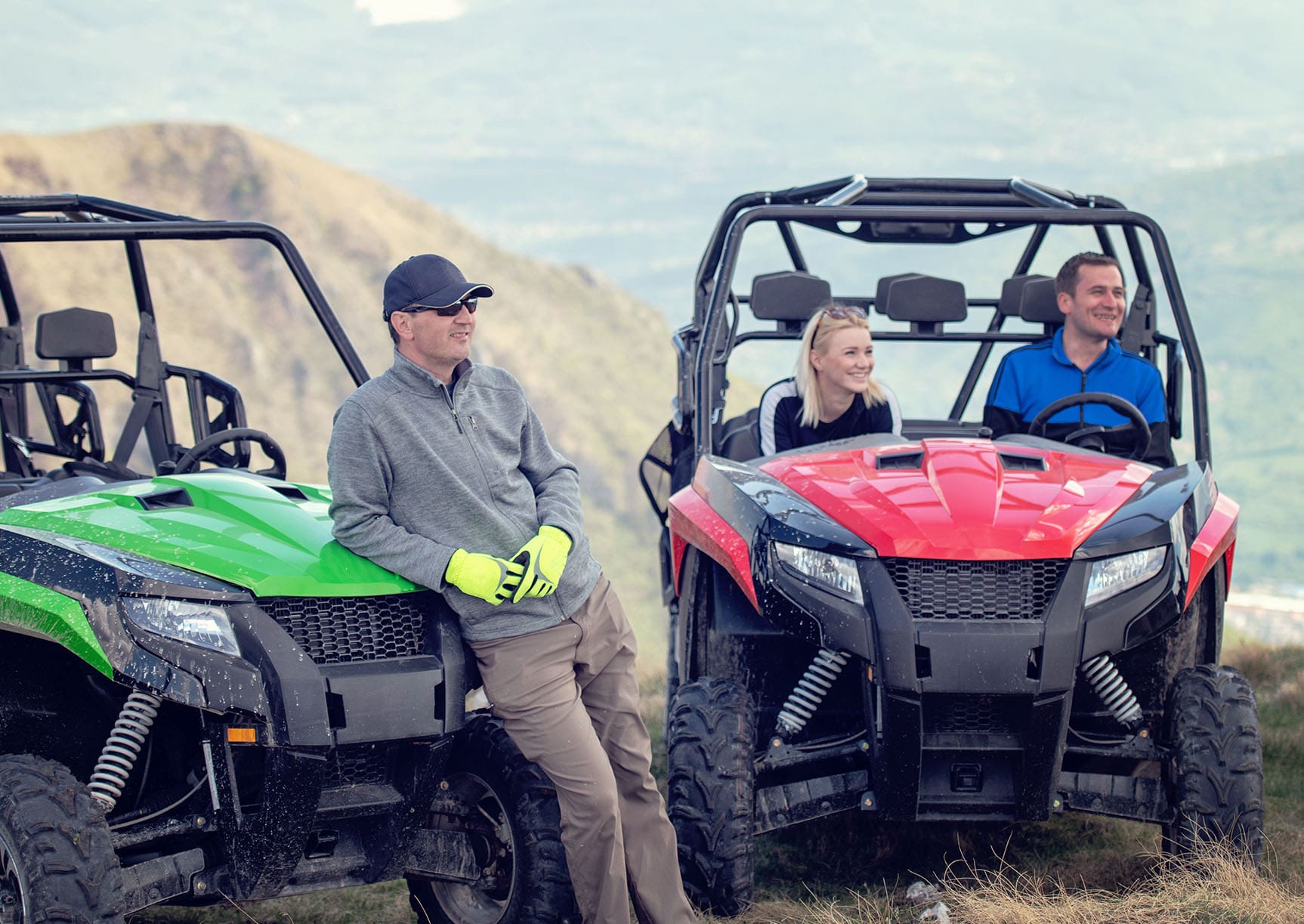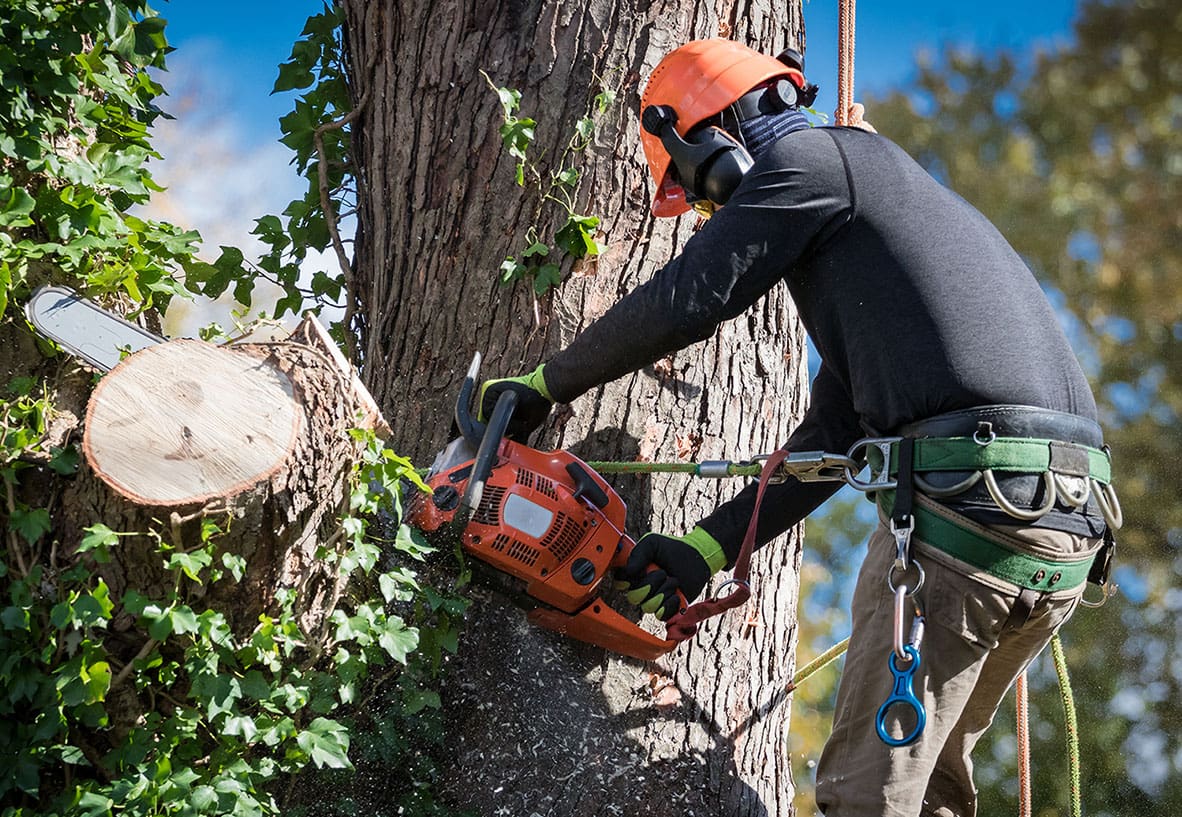When it comes to enjoying the sunshine responsibly, having the right summer safety tips on hand can make all the difference, especially when boating.
During the summer months, boating activity increases and so does the need for heightened awareness and a little preparation. Boating is one of the best parts of summer but ‘safety first’ is always the rule when you’re dealing with open water and high-speed fun.
So, before you untie the dock line, here’s your ultimate summer boating and water safety checklist, plus a few tips to know about the importance of boat insurance.
Stay safe, legal, and prepared on the water
- Life jackets for everyone: One U.S. Coast Guard–approved life jacket per person onboard is a requirement, even for strong swimmers, kids, and pets. Make sure they’re the right size, in good condition, and easy to grab in a hurry.
- Registration & boating licenses: Don’t let a routine stop from the Coast Guard or lake police turn into a citation. Keep your paperwork upto- date and on board.
- Sound signaling device: Whether it’s a whistle, horn, or bell, you need something loud to alert others in low-visibility or high-traffic areas and emergency situations. This is especially important for alerting smaller watercraft, like kayaks or paddleboards.
- Navigation lights: If you’re boating at dawn, dusk, or night — or even in fog or under heavy clouds — functioning navigation lights help keep you visible and legal. Make sure yours meet your boat’s specific requirements.
- Fire extinguisher: Fires on the water are rare, but do happen. A fully charged, marine-rated fire extinguisher should be on board and checked regularly. Coast Guard rules require one to three on board — based on boat size — but it’s smart to keep one in the galley, sleeping area, engine space, and near the exit. Mount them securely, and make sure everyone knows where they are and how to use them.
- First aid kit: Scrapes, cuts, and fishhook pricks happen. A well-stocked first aid kit, complete with antiseptics, bandages, tweezers, and seasickness medication, can keep the fun going.
- Dry bag with essentials: Store your phone, keys, ID, and emergency contact information in a waterproof bag or case. Add snacks, a flashlight, and backup charging gear — you’ll be glad you prepared.
- Backups the basics: Dead battery? Fuel miscalculation? It happens. A paddle, some tools, and a backup fuel source can help you solve small problems without needing a tow.
- Anchor and line: It’s not just for a swim break. A properly sized anchor can save you in the event of engine failure or drifting. Be sure you have enough line for the depths you plan to be boating in.
- Sun protection: Heat exhaustion and sunstroke can hit fast on the water. Even wind on a cloudy day can dehydrate you quickly. Stock up on sunscreen, wear a hat, bring more water than you think you need, and create shade, when possible.
- Appropriate footwear: Going barefoot seems like summer, but sharp rocks, hot surfaces, and splintery docks are no joke. Wear shoes with a good grip—you might need to scramble in a hurry.
- Practice courtesy and awareness: Slow down near docks, marinas, and inlets—your wake can damage moored boats or capsize smaller craft. Always watch for swimmers, non-motorized watercraft, and waterfowl, especially in low visibility or glare. If you’re near a snorkel zone, reduce speed to a crawl and stay alert. A little extra caution goes a long way toward keeping everyone safe.
- File a float plan: Let someone on land know your destination, who’s with you, and when you expect to return. It’s a simple habit that can speed up rescue if something goes wrong.
- Check the weather: Conditions can change fast during the summer months, especially out on the water. Always check the forecast for wind, storms, and tides before you head out—and keep an eye on the sky.
- Know your limits: Be realistic about your boating experience, your vessel’s capacity, and your passengers’ needs. Overloading or overreaching puts everyone at risk.
- Do regular maintenance checks: Inspect batteries, fuel lines, bilge pumps, and safety systems before every outing. A few minutes of prevention can save hours of trouble on the water.
Match your safety prep to your boat type
Remember, not all safety gear is one-size-fits-all, so tailor it to your boat and your adventure. From fishing boats and sailboats to jet skis and pontoons, every type of boat comes with its own rhythm—and its own risks. And no matter how or where you boat, whether that’s a freshwater lake, a coastal inlet, or a busy tidal marina, it pays to plan for the specifics of your vessel and activities.
Here’s a quick breakdown by boat type:
Fishing Boats
- Tackle management: Store sharp hooks, knives, and lures securely, especially if kids are onboard.
- Glove up: Invest in a pair of fish handling gloves for removing successful hooks and lures.
- Anchor and drift sock: Use for control while bottom fishing or when the current picks up.
Speedboats, wake boats, and water sports
- Inspect tow ropes: Frayed ropes can snap and cause injury, especially if you’re towing for water sports or parasailing. Always inspect your tow gear before engaging in any water sports to minimize risk.
- Spotter for towing: Always have someone watching a water skier or tuber.
- Use a kill switch lanyard: Clip your engine cut-off to your wrist or vest—it’s a small habit that helps save lives.
Sailboats
- Backup navigation: You might lose cell signal offshore—VHF Marine Radio will help you stay connected. And because digital tools can fail, it’s best to have paper charts and a compass on hand.
- Harness and tether: Stay safely on deck in rough, open water.
- Sail gloves & safety lines: Avoid rope burn and stay secure during tricky maneuvers.
Pontoons and leisure boats
- Install a carbon monoxide detector: This is especially important in enclosed or semi-enclosed deck spaces.
- Get a shade canopy: Helps prevent heatstroke and sun exhaustion while you’re relaxing.
- Designated sober driver: Party boats are fun, but someone needs to stay sober for everyone’s safety out on the water.
Jet skis and personal watercraft
- Wear your lanyard kill switch: It’s easy to forget, but essential, especially if you get thrown off a jet ski while moving at high speed.
- No-go zones awareness: Watch for shallow water, swim areas, and no-wake zones.
- Stay visible: Bright colors and good spacing from larger boats help keep you safe.
Kayaks, canoes, and paddleboards
- Personal Locator Beacon (PLB): A great safety addition if paddling solo or in remote areas.
- Check weather & tides: Wind and current are major hazards, even on inland lakes.
- Always leash your equipment: It keeps your board and your paddles close if you fall in.
Docked and storm-ready: When your boat’s not in use
If your boat is docked in a marina or private berth, here’s what you should do before a storm or if you’re leaving it unattended:
- Double all lines: Add extra mooring lines in case one fails.
- Rig crossing spring lines: Secure both fore and aft to keep the boat centered.
- Tie-off lines high on pilings: To accommodate tides or storm surge.
- Inspect pilings: Choose tall, sturdy, well-anchored ones.
- Charge your batteries: This ensures bilge pumps function as needed throughout a storm.
- Disconnect from shore power: Power down non-essential systems and keep only critical ones running, like bilge pumps.
- Get to higher ground: If possible, tow the boat ashore. It’s the safest option during severe storms.
Boat insurance: Your waterproof safety net
Life jackets and emergency gear protect you in the moment. Boat insurance protects you before, during, and after you hit the water.
Whether it’s a fishing boat, pontoon, or jet ski, the right boat insurance policy can help cover collision or damage, theft or vandalism, storm-related incidents, injuries or liability, and even towing or emergency assistance. It’s protection that goes wherever your boat does.
What boat insurance typically covers:
- Property coverage – covers damage to your boat (hull, engine, electronics) from accidents, storms, fires, or theft
- Personal property coverage – protects personal items like fishing gear, water sports equipment, and onboard electronics if they’re lost or stolen
- Liability coverage – if your boat causes injury or damage to others, this helps cover costs, including legal fees
- Medical payments coverage – pays medical expenses for you or your passengers after an accident, regardless of fault
- Uninsured/underinsured boater coverage – helps cover costs if you’re hit by someone without adequate insurance
And yes — Jet Skis and personal watercrafts need coverage too. They’re fast, fun, and sometimes unpredictable. Having a policy in place can give you confidence that you’re protected while enjoying the water.
Smooth summer sailing starts here
Whether you’re out on the boat or enjoying a swim in your backyard, safety first always applies. The same attention you give to pool care, like equipment checks, supervision, and cleanliness, should carry over to your boating habits. It’s all part of enjoying water responsibly during the summer months.
It’s even better when you’re prepared and protected. With the right gear, smart habits, and comprehensive boat insurance, you can hit the water with confidence—and focus on what really matters: the thrill of the ride, the calm of the cove, and the moments you’ll remember long after the dock lines are tied.
Have questions about boat or jet ski insurance? Reach out to The Baldwin Group today. We’re here to help you keep your summer safe so you can enjoy fun in the sun.
Call us at 813.939.5288 or start your quote online today.
For more information
We’re ready to help when you are. Get in touch and one of our experienced Baldwin advisors will reach out to have a conversation about your business or individual needs and goals, then make a plan to map your path to the possible.
This document is intended for general information purposes only and should not be construed as advice or opinions on any specific facts or circumstances. The content of this document is made available on an “as is” basis, without warranty of any kind. The Baldwin Insurance Group Holdings, LLC (“The Baldwin Group”), its affiliates, and subsidiaries do not guarantee that this information is, or can be relied on for, compliance with any law or regulation, assurance against preventable losses, or freedom from legal liability. This publication is not intended to be legal, underwriting, or any other type of professional advice. The Baldwin Group does not guarantee any particular outcome and makes no commitment to update any information herein or remove any items that are no longer accurate or complete. Furthermore, The Baldwin Group does not assume any liability to any person or organization for loss or damage caused by or resulting from any reliance placed on that content. Persons requiring advice should always consult an independent adviser.






